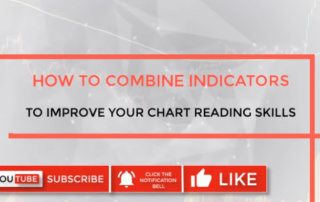The relative strength index.
Every time i read an article or see a video about it, there’s the same misconception every single time: it’s an overbought/oversold indicator, you buy when the RSI is oversold and sell when it’s overbought. No, this doesn’t work, not by itself. You will not make money using the RSI in this way. There’s a lot more about the RSI besides the overbought and oversold levels and in the following minutes I’ll show you everything you must know about the RSI, how to correctly trade with it and how to avoid bad signals so you don’t get stuck in overbought or oversold territory for weeks or months.
Before we continue, if you are new to the channel, make sure you subscribe, hit the bell notifications and leave a like to show your support. Now, the relative strength index is one of the most popular technical indicators and is adjusted by the amount by which the market increased or fell. The RSI values range from 0 to 100. A high RSI occurs when the market has been increasing rapidly. A low RSI occurs when the market has been selling off sharply. On lower time frames, the relative strength index is very volatile, frequently reaching extreme highs and lows, and generating contradicting signals. In flat markets, the RSI will generate signals while prices trade in a range, with no clear direction.
So, used in a wrong way, RSI is useless for many traders. Let’s see what are the main techniques involving the RSI and how to correctly use it to maximize you trading results. First, you could use RSI as an overbought/oversold indicator. The RSI is indeed useful for gaining an overview of the overbought/oversold conditions of the market but it should not be used as a trading signal without a confirmation.
Don’t let the 70/30 RSI levels fool you into entering countertrend positions. Simply because a market reaches overbought or oversold levels, doesn’t mean that prices will immediately reverse in the opposite direction. During periods of strong upward trends or downward trends, markets can remain in the overbought or oversold areas for days, weeks or even months. Just look at this example. A short here would have been a very bad trading decision, because the price continued to increase aggressively. Here’s an important tip to increase your chances for trading overbought and oversold levels.
Combine support and resistance levels with the RSI and look for area of confluence between the RSI and strong areas of support and resistance. An overbought RSI at 75 level means nothing, but at RSI at 75 and the price at an important level of resistance has a higher probability for a successful short. Here is a simple example. We have the Apple stock on the 30 min chart. The RSI hit 70 level and the price was trading at a resistance level, which also coincided with an area of breakout from previous price action. So we had 3 major forces around that area. This is a no-brainer short, at an area of confluence. We have almost an identical trade on this tesla chart. The price broke the support to the downside, and came back to the breakout level, with the RSI reaching overbought areas. As soon as the price hit that area, was unable to go higher and continued its downward direction. Here is a buy example. Remember that the markets are not perfect and not all the time the price will stop right at the support level.
Here we had some stop loss hunting or a false breakout and the price reversed. If we look a little back in the chart, we have another buy opportunity, when the RSI was oversold and the price met support. Another great use of the relative strength index is to look for divergences between the RSI and the price of the security/stock. For example, when prices rallies to a new high but the RSI cannot increase to a new high, then we have a divergence. However, a divergence between the RSI and price is not an exceptional signal. Just because an RSI divergence appears on the charts, that doesn’t mean that you should automatically enter a reverse position. Here the price was in an aggressive downtrend and the RSI formed a divergence. Many traders bought here and got stopped out very soon, because the price continued to decrease sharply. So don’t trade divergences blindly, look for confirmation from price action.
A valid way to trade RSI divergences is to wait for a trend line breakout. In this example, we have a bearish RSI divergence, with the price forming a double top, but the RSI making lower highs. A smart entry would be to wait for the price to break the lower trend line of the upward channel. The price indeed rallied downward after the price broke the trend line. And here is a bullish RSI divergence. We have a double bottom this time, and a RSI making higher lows. Once the price broke the upward trend line, the market opened with a gap up and pushed the price upward. Another strategy you could use is to take signals on RSI around the 50 level. When RSI indicator crosses above 50, a buy signal is generated When RSI indicator crosses below 50, a sell signal is generated This leads some people to think when the RSI crosses the 50 level to the upside that the trend up, and when the RSI drops below the 50 level, the trend is down.
But here is what you need to know: during trending conditions, the RSI indicator will offer very good signals. If you look at this Apple chart, you can clearly see some excellent signals but what about when the markets are not trending? You would get chopped out. So try to use this technique when the markets are trending. In order to smooth the signals offered by the RSI indicator, you could add a moving average on the indicator. By adding a moving average on the RSI, you could search for crossovers, for better quality signals. Now, when you want to trade a crossover between the RSI and a moving average, you should be aware of an important thing. A crossover will catch good movements when markets are trending. When markets are trading in a range, this approach is will lead to a lot of losing trades.
A longer-term moving average added on RSI will work better than short-term moving average and will produce fewer false signals. So, instead of adding a 10 moving average on the RSI for example, try adding a 50 moving average or a 100 moving average and see what the market tells you. The RSI indicator can also be useful for drawing trend lines. The technique of drawing trend lines is subjective, is not a precise science.
This method is simple: you draw straight lines on the RSI indicator connecting support points for an uptrend or resistance points for a downtrend. A valid trend line should connect two or more support points that define the trend. Now, here’s what you should consider. If you will start drawing trend lines on lower time frames, it will not work. There is too much noise and you will record lots of false signals. So never use this technique on a time frame lower than H1 (one hour). Since the RSI is one of the most popular indicators, traders always tweak their RSI settings, depending on their favorite timeframe or trading style. RSI indicator is excellent at generating buy and sell signals. Most of them use the standard settings, RSI set on a 14 period. RSI of 5, 7 and 50 period are also popular among traders. A shorter RSI period – below 10 – will be very volatile and will generate a lot of false signals A longer RSI period – above 20 – smooths out the plotted line and will generate fewer, but more accurate signals.
Now that we saw how to trade with the RSI, let’s consider the pros and the cons of using this indicator. The RSI is good during a trending market condition, combined with moving averages. Also, is excellent at identifying divergences on the chart and overbought and oversold areas. At the same time, the RSI is a lagging indicator and does not contain all of the data necessary for proper analysis of price action, so it should be used in combination with other tools. If you liked this video, make sure you hit that like button, subscribe and turn on the notification bell, so you’ll be notified every time we upload. Until next time..
What You Need To Know About Buying Bitcoins
What You Need To Know About Buying Bitcoins [...]
9 Advantages of Using Bitcoin
9 Advantages of Using Bitcoin Bitcoin is an [...]
Trendline Trading Strategy: Proven Techniques That Actually Work
So, in today's training I would like to [...]
Bitcoin: Beyond The Bubble – Full Documentary
I think that the internet is going to [...]
How to trade on Bitseven, Earn bitcoin from Bitseven !!!
hello everybody and welcome to another video on [...]
How to Combine Trading Indicators (This Separates Professional Traders from Amateurs)
Knowing what indicators to use and what is [...]







